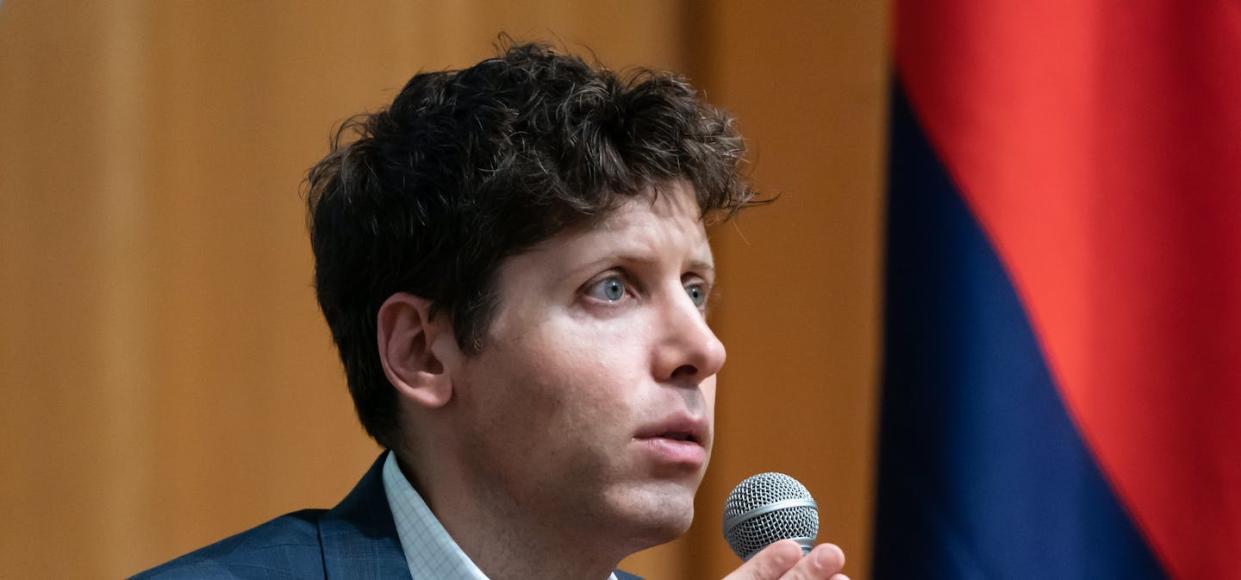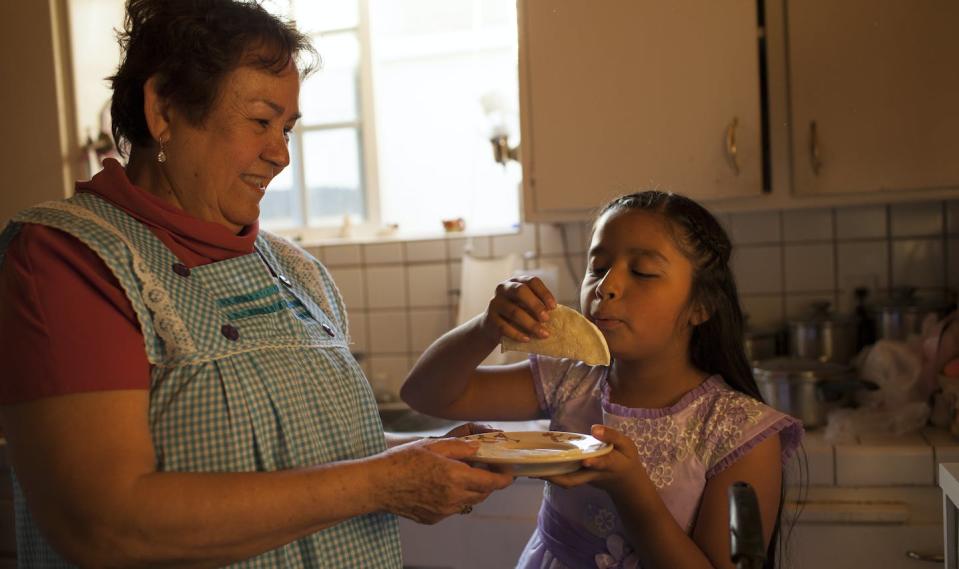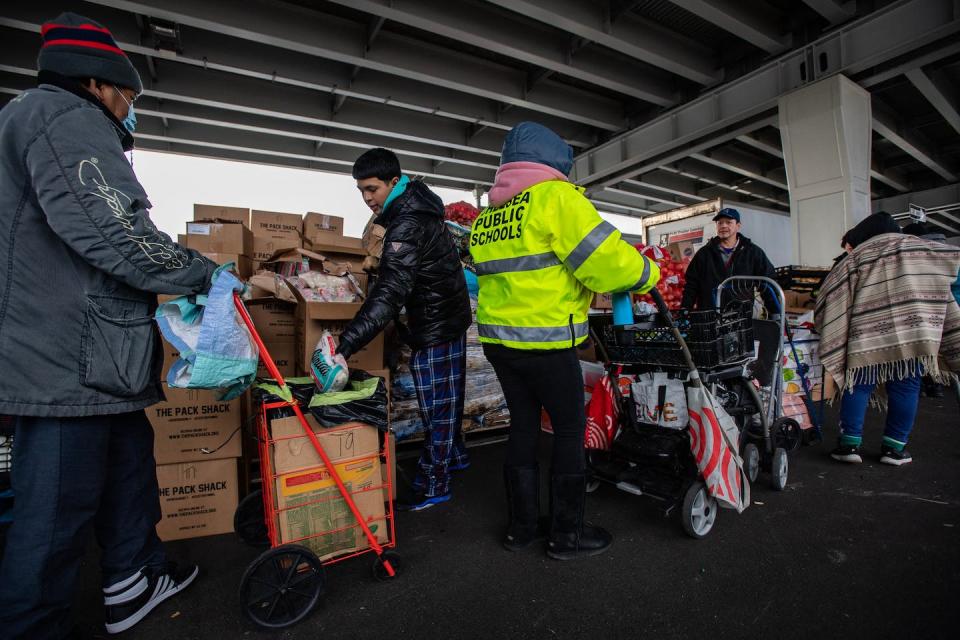OpenAI is a nonprofit-corporate hybrid: A management expert explains how this model works − and how it fueled the tumult around CEO Sam Altman's short-lived ouster

- Oops!Something went wrong.Please try again later.
The board of OpenAI, creator of the popular ChatGPT and DALL-E artificial intelligence tools, fired Sam Altman, its chief executive officer, in late November 2023.
Chaos ensued as investors and employees rebelled. By the time the mayhem had subsided five days later, Altman had returned triumphantly to the OpenAI fold amid staff euphoria, and three of the board members who had sought his ouster had resigned.
The structure of the board – a nonprofit board of directors overseeing a for-profit subsidiary – seems to have played a role in the drama.
As a management scholar who researches organizational accountability, governance and performance, I’d like to explain how this hybrid approach is supposed to work.
Hybrid governance
Altman co-founded OpenAI in 2015 as a tax-exempt nonprofit with a mission “to build artificial general intelligence (AGI) that is safe and benefits all of humanity.” To raise more capital than it could amass through charitable donations, OpenAI later established a holding company that enables it to take money from investors for a for-profit subsidiary it created.
OpenAI’s leaders chose this “hybrid governance” structure to enable it to stay true to its social mission while harnessing the power of markets to grow its operations and revenues. Merging profit with purpose has enabled OpenAI to raise billions from investors seeking financial returns while balancing “commerciality with safety and sustainability, rather than focusing on pure profit-maximization,” according to an explanation on its website.
Major investors thus have a large stake in the success of its operations. That’s especially true for Microsoft, which owns 49% of OpenAI’s for-profit subsidiary after investing US billion in the company. But those investors aren’t entitled to board seats as they would be in typical corporations.
And the profits OpenAI returns to its investors are capped at approximately 100 times what the initial investors put in. This structure calls for it to revert to a nonprofit once that point is reached. At least in principle, this design was intended to prevent the company from veering from its purpose of benefiting humanity safely and to avoid compromising its mission by recklessly pursuing profits.
Other hybrid governance models
There are more hybrid governance models than you might think.
For example, the Philadelphia Inquirer, a for-profit newspaper, is owned by the Lenfest Institute, a nonprofit. The structure allows the newspaper to attract investments without compromising on its purpose – journalism serving the needs of its local communities.
Patagonia, a designer and purveyor of outdoor clothing and gear, is another prominent example. Its founder, Yvon Chouinard, and his heirs have permanently transferred their ownership to a nonprofit trust. All of Patagonia’s profits now fund environmental causes.
Anthropic, one of OpenAI’s competitors, also has a hybrid governance structure, but it’s set up differently than OpenAI’s. It has two distinct governing bodies: a corporate board and what it calls a long-term benefit trust. Because Anthropic is a public benefit corporation, its corporate board may consider the interests of other stakeholders besides its owners – including the general public.
And BRAC, an international development organization founded in Bangladesh in 1972 that’s among the world’s largest NGOs, controls several for-profit social enterprises that benefit the poor. BRAC’s model resembles OpenAI’s in that a nonprofit owns for-profit businesses.
Origin of the board’s clash with Altman
The primary responsibility of the nonprofit board is to ensure that the mission of the organization it oversees is upheld. In hybrid governance models, the board has to ensure that market pressures to make money for investors and shareholders don’t override the organization’s mission – a risk known as mission drift.
Nonprofit boards have three primary duties: the duty of obedience, which obliges them to act in the interest of the organization’s mission; the duty of care, which requires them to exercise due diligence in making decisions; and the duty of loyalty, which commits them to avoiding or addressing conflicts of interest.
It appears that OpenAI’s board sought to exercise the duty of obedience when it decided to sack Altman. The official reason given was that he was “not consistently candid in his communications” with its board. Additional rationales raised anonymously by people identified as “Concerned Former OpenAI Employees” have not been verified.
In addition, board member Helen Toner, who left the board amid this upheaval, co-authored a research paper just a month before the failed effort to depose Altman. Toner and her co-authors praised Anthropic’s precautions and criticized OpenAI’s “frantic corner-cutting” around the release of its popular ChatGPT chatbot.
Mission v. money
This wasn’t the first attempt to oust Altman on the grounds that he was straying from mission.
In 2021, the organization’s head of AI safety, Dario Amodei, unsuccessfully tried to persuade the board to oust Altman because of safety concerns, just after Microsoft invested

The federal government has conducted the U.S. Household Food Security Survey Module for more than 25 years. The data collected annually from about 50,000 U.S. households helps form estimates of the scale of food insecurity – not having access to enough food for a healthy life – at the national and state levels.
But the way Latino parents respond to some of the questions in the annual U.S. Department of Agriculture survey used to measure food insecurity doesn’t always reflect their true experiences. We published this finding in a special October 2023 issue of the Journal of the Academy of Nutrition and Dietetics.
Our team, which included development sociologist Christian DiRado-Owens, conducted a study in California, New York and Texas, using surveys and interviews to help the USDA assess the accuracy and acceptability of these questions among Latino families.
Many of the responses to the survey questions didn’t align with more detailed descriptions of the personal situations of the people we interviewed. When asked to explain their answers, many of them found it easier to talk about how they managed or coped with food insecurity than to respond to questions about how often they worried about or were not able to feed their families as they wished.
Room for improvement
Student researchers asked 62 Latino parents and caregivers the questions from the U.S. Household Food Security Survey Module, letting them select either the English or Spanish version. For half of the 18 questions, people need to answer “often,” “sometimes” or “never.”
For example, the first statement is:
(I/We) worried whether (my/our) food would run out before (I/we) got money to buy more. Was that often true, sometimes true, or never true for (you/your household) in the last 12 months?
The rest are “yes” or “no” questions, such as:
In the last 12 months, since last (name of current month), did (you/you or other adults in your household) ever cut the size of your meals or skip meals because there wasn’t enough money for food?
After people completed the survey, interviewers prompted them with open-ended questions to elaborate further. This approach allowed participants to give feedback about the survey and share their thought processes about their responses.
We found that comprehension of the English words or the Spanish translation of these questions wasn’t the main issue. Rather, the way the questions were written could be improved.
For instance, when asked how often they skipped meals or reduced the size of meals, some of the people we interviewed answered “never.” But they went on to describe how they often prepared significantly smaller meals. In some cases, they recounted having eaten a small snack instead of a meal.
In addition, some of the people who responded that they could always afford enough food for their families later shared how they regularly relied on food pantries and similar programs designed for intermittent or emergency use. While their answers showed a commitment to feeding their families, they did not align with the intention of the questions – indicating that the survey may be underestimating true levels of food insecurity.
Overall, the sensitive nature of the questions and the limited number of possible response options made it hard for some people to answer them accurately – especially on the subject of their children not having enough food. Many people also said they felt that the phrasing of the questions about being able to afford food didn’t reflect their personal situations or experiences.

Higher levels of food insecurity
U.S. food insecurity increased from 10.2% in 2021 to 12.8% in 2022, according to official estimates.
Government agencies, nonprofits and researchers like us use the survey’s findings to address food insecurity and make decisions about food assistance and nutrition policies and programs, including the Supplemental Nutrition Assistance Program.
The Latino population is growing quickly and has become the nation’s largest racial or ethnic group. About 19% of the U.S. population, as of 2022, identified as Hispanic or Latino. Without accurate data regarding this large community, the picture of food insecurity is incomplete. And until now, there has been too little research done to assess whether the survey questions are eliciting valid data for Latinos.
Food insecurity among Latino families with children is already high, according to the most recent official data, which was collected in 2022: 13.2% compared with 5.5% for white households with children. But based on our findings, it’s likely that the real picture is even worse.
Next steps
Our team is now analyzing data from the interviews we conducted to take a closer look at the strategies these Latino families used to cope with food insecurity at the height of the COVID-19 pandemic.
We’re also seeing whether Latino parents and caregivers living in very large urban communities answered questions differently compared with those residing in smaller cities and towns.
In addition, we want to assess any differences among Latinos of different heritages – such as Mexican Americans and Puerto Ricans – to find ways to get more accurate data regarding food security for Latino families with children.
This article is republished from The Conversation, a nonprofit, independent news organization bringing you facts and trustworthy analysis to help you make sense of our complex world.The Conversation is trustworthy news from experts. Try our free newsletters.
It was written by: Cassandra M. Johnson, Texas State University; Amanda C. McClain, San Diego State University, and Katherine Dickin, Cornell University.
Read more:
Nearly half of all churches and other faith institutions help people get enough to eat
Food insecurity already affects 12 million US homes – and reductions in SNAP benefits won’t help
Cassandra M. Johnson received funding from the U.S. Department of Agriculture for the research in this article. In addition, she receives external funding through research grants from the U.S. Department of Agriculture and U.S. Department of Health and Human Services and a contract with the Sustainable Food Center.
Amanda C. McClain received funding for this, and other community-based, research from the U.S. Department of Agriculture. She also receives research support from the National Institutes of Health.
Katherine Dickin received funding from the U.S. Department of Agriculture (USDA) for the research in this article. She has also received previous funding from the USDA, the U.S. Agency for International Development, and UK-AID.

